JARS v61n3 - Seed Processing With the Professionals
Seed Processing With the Professionals
Joan Hardy
Member of the ARS Seed Exchange Committee
Eatontown, New Jersey
Seed processing most properly begins in the great outdoors with seed collection. Seed can be collected from the wild, from open pollinated flowers in the garden, or from the carefully protected and marked controlled crosses of the hybridizer. Collectors have the least control in wild collection where distance, weather, and timing each impose their separate challenges. In the garden, we have best control of timing, and we can chose to collect still green pods or the brown dried-out pods just on the verge of dropping their seed.
While the Rhododendron Seed Foundation recommends waiting till the pods are dry and fully mature, Hank Shannon of Rare Find Nursery declares Labor Day to be his official collection day, and blithely collects fully viable seed from juicy green pods. Make sure green pods collected have plenty of ventilation to complete their drying process. Whichever is your timing preference, carefully mark the outside of each envelope with date, parent names, and collection location. Since many pods will open on their own during the drying process, guard your valuable envelope's contents by taping the sides of your envelopes.
Just like our ARS Seed Exchange's John Nicolella, in the dead of winter, Sheffield's Seed Company is busy receiving, cataloging, cleaning, testing, packaging and distributing seed. Sheffield's specializes in trees and flowering plants. They carry species rhododendron seed and an extraordinary array of other temperate and tropical plant seed. Sheffield's uses individual collectors and growers from their worldwide network to amass a wide variety of stock. Although Sheffield's pays a premium to collectors who clean their seed, much of their stock arrives uncleaned.
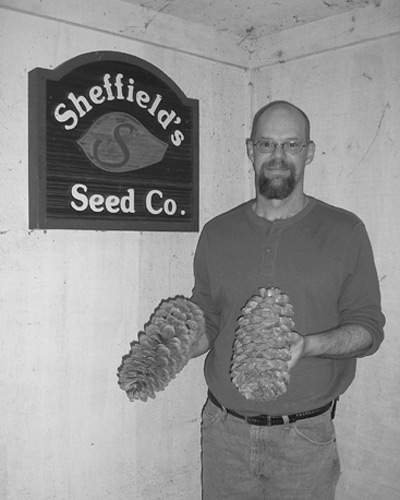
|
|---|
Joe Inman of Sheffield's Seed Co. with giant cones. Photo by Joan Hardy |
Cleaning seed is very important because debris from the seed case will harbor fungi that may affect germination. Seed submitted to our ARS Seed Exchange will often be exported to foreign countries, where standards for seed importation are becoming more stringent each year. The author had the privilege of sitting with Joe Inman, a Sheffield employee and rhododendron collector, to observe his methods of cleaning some sample recalcitrant seed pods. Joe's lesson began with the words "first get organized." He set up a table containing the following equipment: tweezers, brass testing sieves, razor blade, white paper, and plastic bowls.
The secret is in the cracking. Substantial work can be avoided if you crack the seed pods open carefully instead of smashing them. In many instances, you can cut off the end with your razor blade, and gently spread the pod open. Sometimes this just doesn't work because the pod is too dry or too wet. The solution is simple. Put the pods in the refrigerator at 50 °F overnight. In most cases, this will adjust the humidity content of the pod, so that it cracks just right. Clean out the pieces of pod with a razor blade, where additional seed my hide. Discard truly empty hulls (see photo below).
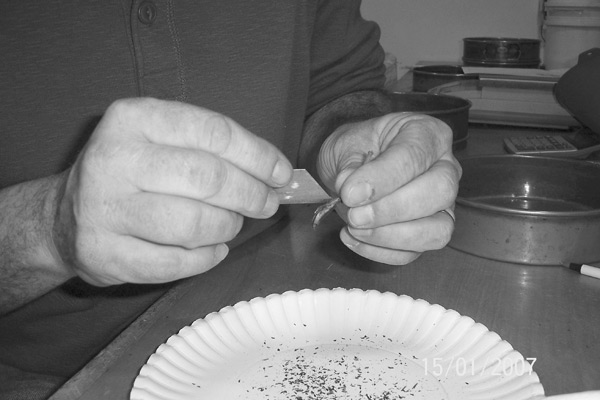
|
|---|
Using a razor blade to remove seed from pod. Photo by Joan Hardy |
The author prefers an assortment pack of test screens from McMaster-Carr. Sheffield's has a magnificent set of brass screens (see photo). Find the screen that is just big enough for your seed to pass through and leave the chaff. Note: Save both the seed and the chaff, in separate bowls. Repeat the process with different size sieves. You will have an array of separations.
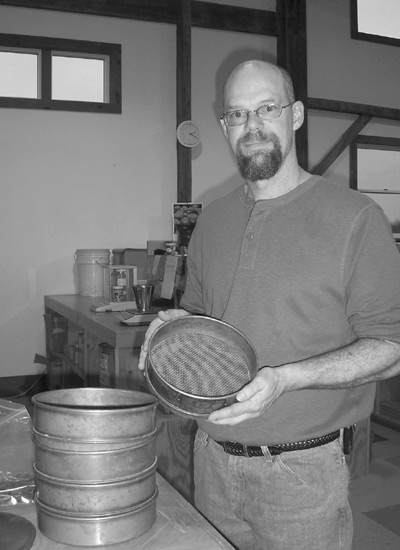
|
|---|
Joe Inman with sieves for separating seed from chaff. Photo by Joan Hardy |
The next part requires tenacity. On white paper, hand separate the seed from the chaff in each bowl, using your fingers or the razor blade. Your goal is to get the seed somewhere from 95% to 98% clean. It helps to have good eyes. Beware the magnifying glass' static charge that can draw both seed and chaff to its lens. If you are cleaning vireya seed, don't even breath! Go through all bowls.
Visually inspect your seed. While the professional will X-ray rare seed to observe changes in viability, you can look for signs of discoloration or misshaped seed. Store your seed first in folded tissue paper, and then in envelopes. Mark your seed clearly with all information (date, collection site, parentage). Your seed is ready to sow already! Just in case you aren't ready for it, you can store your seed for a very long time in the refrigerator or freezer.
Don't make the mistake of placing your seed in the freezer immediately. In order to maintain viability, prior to freezing, seed must be desiccated. You can use desiccant from a photography store or powdered milk if you are thrifty. According to Rick Sheffield, professionally stored rhododendron seed (non-vireya) can last ten to fifteen years or more. Vireya seed, even though it is tropical, can be stored 2-3 years maximum in a residential freezer. Finally, share your excess seed by becoming a contributor to the ARS Seed Exchange. Check for submission deadlines on the ARS website.
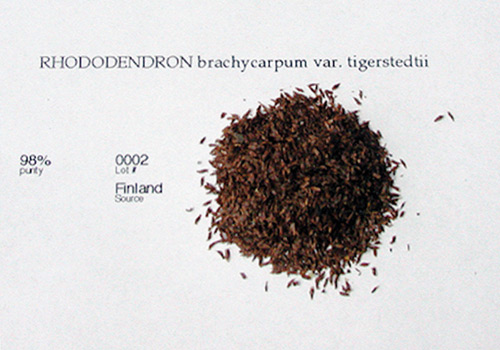
|
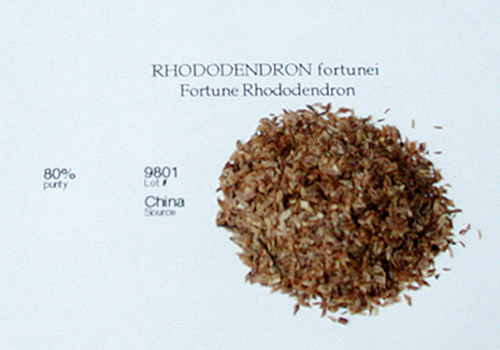
|
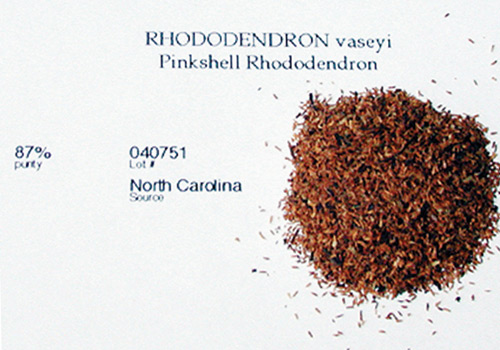
|
||
|---|---|---|---|---|
Processed Rhododendron Seed |
||||
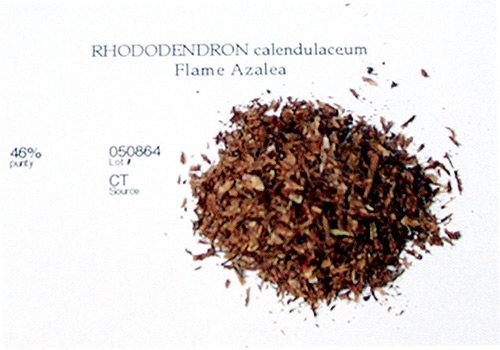
|
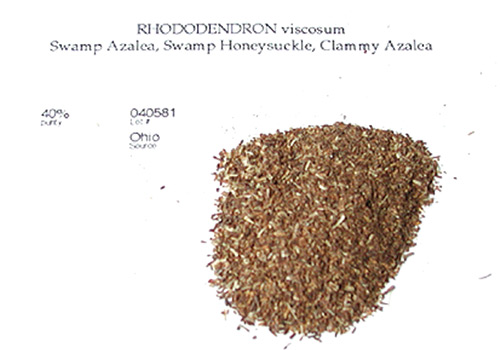
|
|---|
Best Source for Screen:
McMaster-Carr
P.O. Box 740100
Atlanta, GA 30374-0100
(404) 346-7000
www.mcmaster.com
Sheffield's Seed Company
69 Auburn Road, Route 34,
Locke, New York, 13092 U.S.A.
Phone: (315) 497-1058
www.sheffields.com

